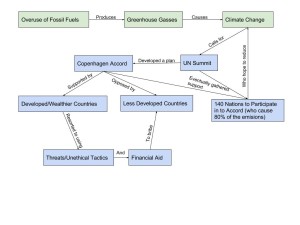Pat 1: Write about a place you have visited with a unique ecosystem, and describe the types and levels of biodiversity that exist there from what you have experienced. What factors contribute to this biodiversity? Was is the same 50 years ago or longer? How have humans impacted the biodiversity in this area?
Part 2: What can the government or people in that local area do to increase the level of biodiversity in this region? Who should be responsible for improving the biodiversity in this area?
Two summers ago I had the opportunity to visit the Pacific Northwest including Seattle, Vancouver, and the rest of British Columbia. This was one of my favorite vacations I have ever been on, and probably the most beautiful place I have seen. Since most of the area is considered a temperate rainforest, there is a very large amount of biodiversity there. There are many factors that contribute to this. The summers have mild temperatures and pleasant weather, and winters are slightly colder with lots of rainfall. It is very mountainous with a variety of features such as shorelines and sunnier high altitude regions, creating many microclimates. It is also a very old and large area, being directly connected to the rest of North America. This has allowed many types of species from elsewhere in the continent to migrate and thrive in the Pacific Northwest. While this area is relatively natural and untouched by humans compared to most of North America, it still shows scars and issues due to human activity. Being a massive forest, it is very desirable to log throughout the area, especially the valuable redwood trees. Throughout my visit it was incredible to see these massive trees, however very upsetting to see that such a large portion of them are now reduced to stumps. Many species are supported by the existence of these trees and others. The logging in the region has certainly hurt them, although there has not been a significant decline in overall biodiversity so far, outside of the highly populated areas of Vancouver and Seattle. There is still a massive amount of wilderness where many species can thrive.
Although there are many things that the local governments and people do to protect the nature in their area, and it has worked well, there are still several things they can do to improve the biodiversity. The most obvious being to solve the amount of logging that occurs. This area is one of the highest producers of lumber in the continent, so it is definitely not easy to reduce the logging when the industry is so large. Because of this, there is little that the people can do. It is mostly up to the government to take more responsibility and stand up to these companies who have lobbied very hard to gain access to these forests and log the amount that they do. Another thing that can definitely be improved is the level of pollution from Seattle, Vancouver, and surrounding populated areas. They are the main sources of pollution in the Pacific Northwest, despite them being quite eco-friendly as far as cities go. The people who live there can certainly still work improve like reducing waste and using more efficient modes of transport. Any improvement in this will help, as the pollution is certainly harming the biodiversity in the surrounding areas.


